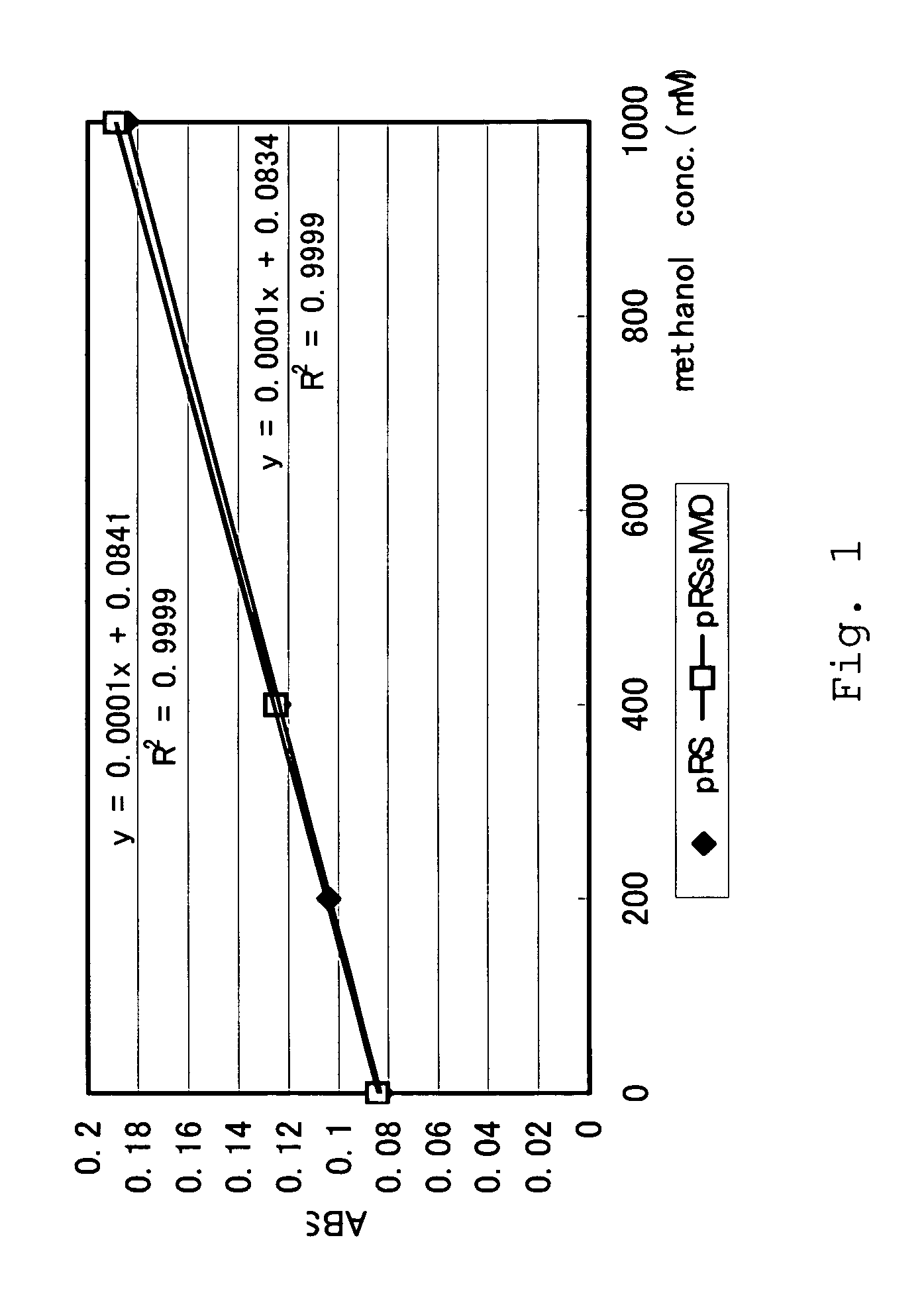Method for producing alcohol by using microorganism
a technology of microorganisms and alcohol, applied in the field of alcohol production methods, can solve the problems of unsolved fundamental problems of complex purification methods, inability to stabilize enzyme activity, and conversion into formaldehyd
- Summary
- Abstract
- Description
- Claims
- Application Information
AI Technical Summary
Benefits of technology
Problems solved by technology
Method used
Image
Examples
examples
[0054] Hereinafter, the present invention will be explained more specifically with reference to the following examples.
[0055] Preparation of Chromosomal DNA Library of Methane-Utilizing Bacterium, Methylococcus capsulatus
[0056] A space in a culture vessel containing the medium of Whittenbury et al. (J. Gen. Microbiol., 61, 205-208, 1970) was replaced with a mixed gas of methane and air. The methane-utilizing bacterium, Methylococcus capsulatus NCIMB 11132 strain, was inoculated into the medium in contact with the gas and cultured under aerobic conditions as a batch culture, while gas replacement was continued.
[0057] Chromosomal DNAs were extracted from the cells of the Methylococcus capsulatus NCIMB 11132 cultured as described above by the method described in Biochem. Biophys. Acta., 72, 619 (1963). The chromosomal DNAs were completely digested with the restriction enzyme BamHI. The obtained DNA fragments of various sizes were inserted into a plasmid vector pUC18 (purchased from ...
PUM
| Property | Measurement | Unit |
|---|---|---|
| temperature | aaaaa | aaaaa |
| temperature | aaaaa | aaaaa |
| temperature | aaaaa | aaaaa |
Abstract
Description
Claims
Application Information
 Login to View More
Login to View More - R&D
- Intellectual Property
- Life Sciences
- Materials
- Tech Scout
- Unparalleled Data Quality
- Higher Quality Content
- 60% Fewer Hallucinations
Browse by: Latest US Patents, China's latest patents, Technical Efficacy Thesaurus, Application Domain, Technology Topic, Popular Technical Reports.
© 2025 PatSnap. All rights reserved.Legal|Privacy policy|Modern Slavery Act Transparency Statement|Sitemap|About US| Contact US: help@patsnap.com

